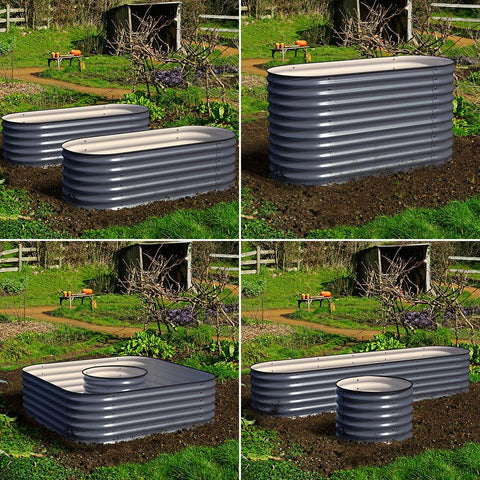Maximizing Space with Stacking Raised Garden Beds
If you want to grow more plants in a small space, then stacking raised garden beds may be the solution. These beds are a great way to create more growing space without taking up extra room in your garden. In this article, we will explore the benefits of stacking raised garden beds, the different types available, and tips for using them effectively.

Benefits of Stacking Raised Garden Beds
More Growing Space: Stacking raised garden beds allow you to grow more plants in a small area. This is especially beneficial if you have limited space or want to maximize your garden's potential.
Better Drainage: When you stack garden beds, you create a system of multiple drainage layers, which can help prevent soil erosion and excess water buildup.
Easier Access: Stacking garden beds can make it easier to tend to your plants, especially for those who have difficulty bending or kneeling.
Versatility: Stacking raised garden beds come in various sizes and shapes, allowing you to customize your garden to your specific needs.
Types of Stacking Raised Garden Beds
Interlocking Stacking Beds: These are the most common type of stacking raised garden beds. They are designed to interlock and stack on top of each other, creating a sturdy and stable structure. These beds come in different shapes and sizes and can be made of various materials, such as wood, plastic, or metal.
Tiered Garden Beds: These are a series of individual garden beds stacked on top of each other, with each layer being slightly smaller than the one below it. This design allows for a more gradual slope and provides a visually appealing structure for your garden.
Wall-Mounted Garden Beds: These are garden beds that are attached to a wall or fence, saving space while still allowing you to grow plants vertically.
Tips for Using Stacking Raised Garden Beds
Plan Your Garden: Before stacking your garden beds, plan out which plants you want to grow and how much space they will need. This will ensure that you have enough room to grow all of your plants.
Proper Drainage: Make sure to create proper drainage for your stacked beds. This can be done by adding a layer of gravel or sand at the bottom of each bed or drilling drainage holes in the sides.
Soil and Fertilizer: Use high-quality soil and fertilizer to ensure that your plants get the nutrients they need to thrive. You can also use compost or organic matter to enrich the soil and promote healthy plant growth.
Watering: Stacked garden beds may dry out faster than traditional garden beds, so make sure to water your plants regularly. Use a soaker hose or drip irrigation system to ensure that water is evenly distributed throughout the beds.
Crop Rotation: To prevent soil depletion and pests, rotate your crops each season. This will also help to maintain the health of your soil and promote healthy plant growth.
Stacking raised garden beds are a great way to maximize growing space in a small area. By using the proper materials and techniques, you can create a sturdy and stable structure that will provide a great growing environment for your plants. Whether you are using interlocking stacking beds, tiered garden beds, or wall-mounted garden beds, following these tips will help you create a successful and productive garden.
